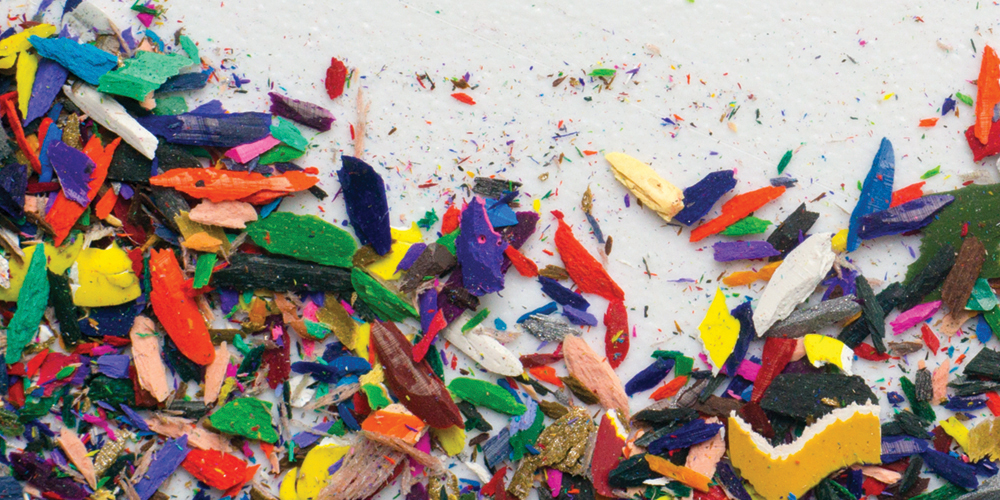Magazine
We once lived in northwest New Jersey, near the Crayola Crayons factory store in Easton, PA. The brand name Crayola is one that most children, particularly in North America, grew up with. Who didn’t have the ubiquitous box of multicolor Crayola crayons to use for coloring as a child? Being that this delightful factory store was nearby, Marylou once suggested we go on a field trip to Easton, to which I reluctantly agreed. I told myself that I was going to go to observe the children. I would enjoy watching how crayons were made, learning just what activities they might have, and learn more about the world of color. I was anticipating a cognitive experience.
I went from section to section, floor to floor, watching and enjoying the various exhibits and demonstrations about how crayons were made, colored, packaged, and marketed. Fascinating. I’d make comments such as: “Our friends and their children would really enjoy this trip,” and so on. Eventually, we got to a section that had crayons of every color imaginable, with delicious names like “blueberry pie” all amidst seemingly endless reams of clean blank paper. The message shouted to all who entered was this: “Explore, create, and make something, using our crayons and other products.” All around, people, mostly small children, were hard at work – using scissors, and all kinds of Crayola products. I was observing it all.
And then it happened. Marylou, herself an artist, went quickly to work. She hurriedly but beautifully sketched and colored, folded and cut, created and recreated. Then she looked over at me, and said something like, “Why are you just standing there watching and observing? Grab some paper, crayons, and start coloring something—anything—and don’t be afraid to color outside the lines.” My response? Sheer terror.
If I were 5 again, I would have responded to her invitation with joy and abandonment. I loved coloring. I remember getting beautiful Crayola crayons as gifts, with dozens of beautiful colors nestled in straight rows and packed neatly together in the box. The bigger the box, the better. And color away I did, until one day in some school class, according to my teacher, my coloring became no longer adequate. I was told I had no artistic talent. So, when the art competitions came along, I simply slinked back to the corner, deferring to others. My interest in art was put on hold. …
Therefore, being told to “color outside the lines” decades later simply terrified me. By that time, I had completed three graduate degrees, including a law degree and a PhD from reputable universities. I had spent much time in intellectual discovery and theoretical analytics. I had already completed one 10-year university presidency and was then serving as president of another leading New York-based nonprofit. Now here I was at the Crayola factory, immobilized by the words “color outside the lines.” Why?
Academic Training Didn’t Do It
All of my academic training taught me many things, but creativity and doing art were not on the list. My CEO leadership experiences had taught me to stay within the lines, whether adherence to a strategic plan once developed, budget parameters once approved, board policy once implemented, or alignment with the mission once established. The key to good budget control is to stay within the lines. In other words, to ask me or other students of leadership to color outside the lines goes against almost everything we have experienced or been taught as leaders. The inference was that the really good leaders focus on the “hard” stuff, things such as managing budgets, pursuing conservative financial analysis, exploring the particulars of market research, not taking undue risks, and staying up-to-date with technology strategy.
Julia Cameron, in her classic The Artist’s Way Workbook, encourages people like me to face this question: When did staying within the lines become the norm? … In essence, Cameron is suggesting that we cannot think our way to creativity as much as we do our way to creativity: “[W]e awaken our creativity by using it, not through theory. You will not learn to be fearless, but you will learn how to create despite your fears.”
Several years ago, I was attending a conference of university presidents. The overall theme was dealing with presidential leadership in tough times. We all knew that indeed the times were tough, perhaps tougher than at any other time in the history of higher education. Each of us recognized that maybe we were currently seeing only the tips of the icebergs that we would face in the years ahead.
One of our plenary speakers was the president of the Art Institute of Chicago, Dr. Walter Massey. After discussing the many challenges faced by the contemporary leader, he offered “key drivers” to help manage and lead during turbulent times. I eagerly embraced and acknowledged each one of his points:
- the importance of vision and mission (“nothing new here,” I quickly concluded);
- enhancing quality (“of course, that’s a no-brainer”);
- institutional loyalty (“again, of course”);
- organizational effectiveness (“yawn”); and
- creativity (“yikes!”).
He went on to explain that as leaders we all need to be explorers, noting that playful creativity is essential to social and economic entrepreneurialism.
What is playful creativity? Leaders have often heard of the need to create new businesses, new jobs, new programs, and new solutions to meet new needs—in essence, to think outside the box. The leadership mantra of the moment is, “We’ll not be able to ‘cut the budget’ enough to manage our way out of our financial distress.” And all of us have heard the saying: “If you always do what you’ve always done, you’ll always get what you’ve always got. Now is that what you want?” But here was a distinguished former liberal arts university president—now art institute president—linking effective leadership to creativity and artistic expressions, and identifying the need for creativity as a distinctive leadership soft skill. Indeed, he was challenging all of us as college and university presidents to engage in more personal creativity and to foster more creativity in the workplace. I was reminded of the late Peter Drucker’s challenge to business schools to focus more on opportunity finding, not just on problem-solving.
Then a light bulb went on about my Crayola “outside the lines” experience of many years before. At some time in my life I had pushed down the creative, artistic side of me. I had subordinated the “soft” stuff, to the “hard” stuff, in essence, the analytical, intellectual side of me. At some time in my life, I had concluded that only the “hard” skills mattered in management and leadership, and if “soft” skills were in play, they were far less relevant and certainly less important. Coloring outside the lines at its worst was a frightening, unpredictable experience.
Or, at its best, could it become an act of faith? Again, to paraphrase Cameron, art is a spiritual act. It takes faith to move onto the page, the stage, the easel—or the leadership platform of leading in uncharted waters.
I was not alone as a leader as someone not gifted in coloring outside the lines, as I have heard this from many other leaders. In the words of another, I had come face to face with this question: “If you want your team members to think outside the box, why are you coloring inside the lines?” Here I was learning from Dr. Massey that leaders without an authentic creative side may ultimately be unprepared, if not inadequate, for the contemporary demands of leadership. Why? Because of our inability to color outside the lines, or to think outside of the proverbial box, we may be unable to see, let alone understand, the multifold new opportunities that are everywhere, all around us.
Adapted from The Softer Side of Leadership: Essential Soft Skills That Transform Leaders and the People They Lead by Eugene B. Habecker (Deep River Books LLC, 2018), with permission of the author.
Eugene B. Habecker is president emeritus of Taylor University (Upland, IN).
Why Other CCCU Leaders Recommend This Book
“This work is instructional, timely, and inspiring. Dr. Habecker crafts a different kind of leadership, one that avoids the latest trends, focusing instead upon timeless and powerful values that transform the workplace through a lifestyle that exemplifies Christ.”
Sandra Gray, President, Asbury University
“When Gene Habecker speaks to the topic of leadership, the wise and prudent person listens. Few people in this world have the depth and breadth of experiences in the position of chief executive as does he. In The Softer Side of Leadership, he shares lessons that can only come from digging deep into a lifetime of experience and doing so with a servant’s heart.”
Lowell Haines, President, Taylor University
“Gene Habecker is a both/and leader. He is wired to do the hard skills of leadership well – and this deeply personal book reveals how he learned to do the soft skills of leadership effectively. In addition to learning from Habecker’s experiences, you will encounter a treasure trove of wisdom from other top-level leaders in the book. The Softer Side of Leadership is personal, practical, and probing. It will challenge any leader to keep growing in ways that matter.”
Jay Barnes, President, Bethel University
Discussion Guide: Dr. Sherilyn Emberton, president of Huntington University, created a discussion guide as a resource for going through the book; it is available here.



